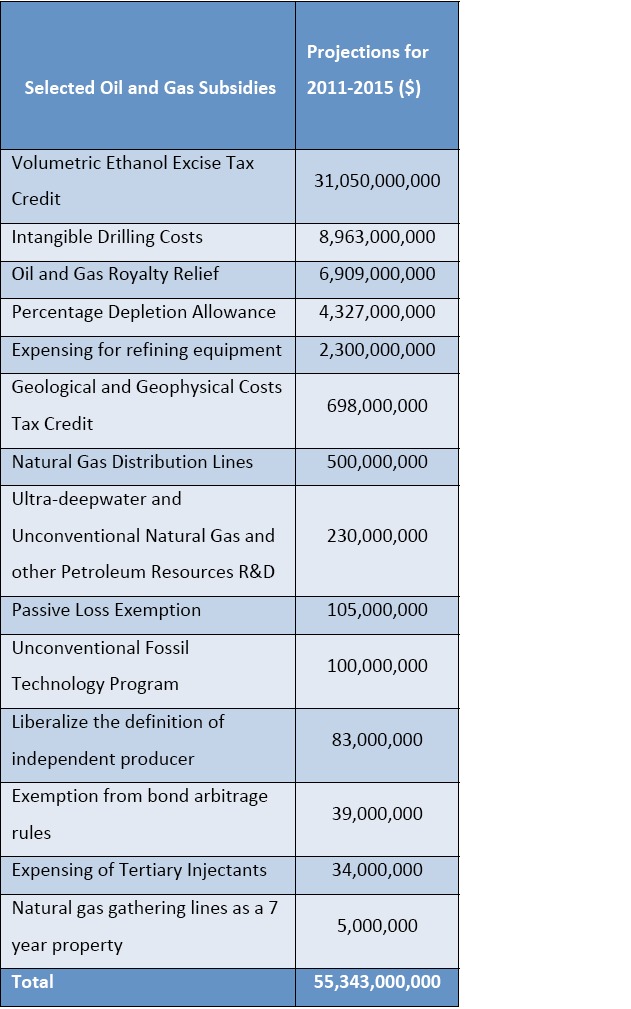As the debt showdown between President Obama and top House Republicans drags on, you’ve probably been hearing about the billions in tax subsidies we give to the oil and gas industry each year. And if you haven’t been, you should be; eliminating those subsidies would be a great way to reduce spending without raising taxes or cutting services.
So what does all that money go toward? And aside from a broken climate and oil spills, what exactly does it buy?
Fossil-energy companies get tax exemptions, free access to drill on public land, special accounting rules to hide profits, protection from foreign competition through import tariffs and regulations … and the list goes on. We give so many favors to oil and gas companies that it’s hard to keep track. Luckily, the determined wonks at Taxpayers for Common Sense have done it for us. The charts below tease out the biggest oil and gas subsidies hidden in various laws and accounting rules for 2011-2015. With more than $55 billion in targeted benefits for the industry and nearly $23 billion in general business subsidies, it’s nothing to sneeze at.

In the early 1900s, it might have made sense to give the young oil and gas industry a boost, but today it’s one of the largest, most profitable industries in history, obviously no longer in need of handouts from Uncle Sam. Check out the chart below comparing total subsidies to the net profits of the top five oil companies.
Some Republicans are saying, “Hey, these aren’t really government spending, they are just tax deductions. Cutting them would be raising taxes, something we can’t afford to do in a recession.” This is where political and economic realities part ways. From an economic standpoint, there is no difference between giving someone a tax break of $100 and giving someone a check for $100. Either way, the treasury is out a hundred bucks.
In a recent article in National Affairs [PDF], economist Donald Marron calculates that about $600 billion in spending is hidden in the tax code, or nearly 20 percent of the federal budget. Marron writes, “Because tax cuts often sound more appealing to policymakers and voters than spending increases — especially in today’s political climate — the temptation to spend through the tax code is enormous. And the confusion surrounding such spending allows politicians to claim they are saving taxpayers’ money when, in fact, they are really spending it.”
For the most part, these tax preferences are not simply “loopholes” or errors in the tax code. They are spending disguised as tax breaks. As the debate in Washington rages on about how to reduce spending, the billions in spending hidden in the tax code deserve the same close scrutiny as entitlements, defense, and domestic programs.
The oil industry and their political shills in Washington also argue that axing these subsidies would raise the cost of gasoline, but again, economic reality gives lie to their rhetoric. The cost of gas depends primarily on global oil supply and demand (more on gas prices here). While the U.S. sucks up 25 percent of global oil production, we have only 1.5 percent of proven reserves. No matter how much we “drill baby drill,” or how much we stick it to the oil companies, we can’t substantially affect the global supply and therefore price of oil. It is the rising demand in the developing world and the threats to production in unstable countries that determine how much we pay for gasoline here at home.
Subsidies to the gas and oil industry are completely unnecessary and do nothing to relieve pain at the pump, yet they cost American taxpayers billions. The companies don’t need them and we can’t afford them; it’s time to end them.
See also: David Roberts on whether we should end all energy subsidies.


